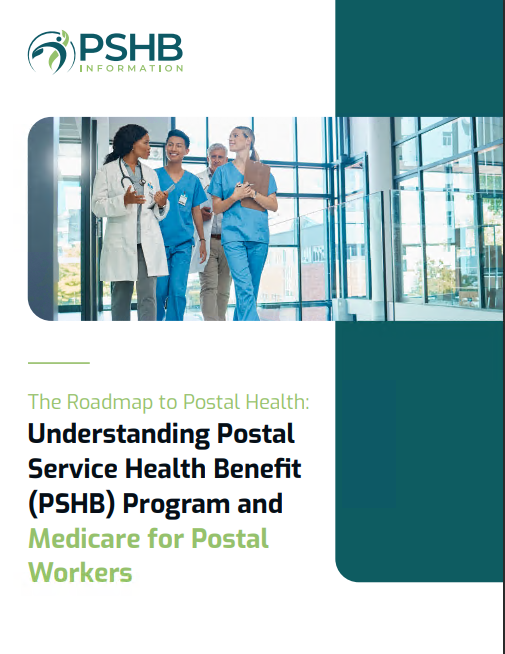Key Takeaways
-
The $2,000 annual out-of-pocket cap under Medicare Part D in 2025 can significantly reduce your prescription drug costs—if your PSHB plan integrates with Medicare Part D.
-
You must be enrolled in both a PSHB plan and Medicare Part B to receive Medicare Part D drug coverage through the Employer Group Waiver Plan (EGWP) included in your PSHB benefits.
Understanding the 2025 Medicare Part D Cap
In 2025, a major shift occurs in how prescription drug costs are managed under Medicare Part D. A new law introduces a $2,000 cap on annual out-of-pocket spending for covered medications. This is part of a federal effort to reduce financial burdens on Medicare beneficiaries, including those enrolled in Postal Service Health Benefits (PSHB) plans.
But here’s the key detail: this cap only applies if your PSHB plan works with Medicare Part D, specifically through an Employer Group Waiver Plan (EGWP). As a postal retiree or eligible worker transitioning to Medicare, this integration makes a big difference in your drug coverage and total annual costs.
What the Cap Actually Covers
The $2,000 cap in 2025 is a limit on what you spend out of pocket on covered prescription drugs over the course of the calendar year. It includes:
-
Copayments
-
Coinsurance
-
Deductibles (up to plan limits)
-
Any other cost-sharing amounts for covered drugs
Once your spending hits $2,000, your Part D plan—via the EGWP—pays 100% of your drug costs for the rest of the year. This applies to covered brand-name and generic drugs under the Medicare Part D formulary.
How the PSHB Program Connects to Medicare Part D
If you are a Medicare-eligible postal retiree or family member, your PSHB plan includes prescription drug coverage through an integrated Part D EGWP. Here’s how this works:
-
Your PSHB plan contracts with a Medicare Part D sponsor to offer an EGWP.
-
You are automatically enrolled in this coverage unless you actively opt out.
-
The EGWP provides the same benefits as standard Medicare Part D, including the new $2,000 cap.
However, to remain eligible for this integrated drug coverage, you must also be enrolled in Medicare Part B. If you are not enrolled in Part B, you lose access to the EGWP and the $2,000 out-of-pocket limit does not apply.
Why Medicare Part B Enrollment Matters
PSHB plans in 2025 require Medicare-eligible annuitants and family members to enroll in Medicare Part B as a condition of full plan participation. Without Part B:
-
You may be disenrolled from the EGWP drug plan.
-
You could face gaps in prescription coverage.
-
You will not benefit from the $2,000 annual cap.
This requirement ensures that your PSHB plan can coordinate benefits effectively with Medicare Parts A, B, and D. When all parts are aligned, your total costs are much lower and coverage is more complete.
What Happens If You Opt Out of the EGWP
Some retirees may consider opting out of the Medicare Part D EGWP for personal reasons. However, doing so can come with serious consequences:
-
You forfeit access to the $2,000 cap.
-
You lose Part D drug coverage through your PSHB plan.
-
You may not be able to re-enroll unless you qualify for a Special Enrollment Period.
Even though you can technically purchase a standalone Part D plan, it likely won’t coordinate as smoothly with your PSHB plan, and may not offer the same cost savings.
Costs You Still Might Face
While the $2,000 cap is a major relief, there are still some drug-related costs that fall outside of this protection:
-
Non-covered drugs: Medications not on the Medicare Part D formulary are not included.
-
Over-the-counter medications: These are not part of Part D benefits.
-
Brand name preference: If your PSHB plan has tiered pricing and you choose a more expensive brand drug over a generic equivalent, you may pay more.
Your PSHB plan brochure outlines which prescriptions are covered and how drug tiers impact your share of the cost.
Coverage Phases Under Part D in 2025
In 2025, Medicare Part D has three clear phases:
-
Deductible Phase
You pay 100% of drug costs until the plan’s deductible is met. The maximum deductible allowed under Part D in 2025 is $590.
-
Initial Coverage Phase
After the deductible, you pay a portion of the cost (copay or coinsurance). Your PSHB plan’s EGWP determines exact amounts.
-
Catastrophic Phase
Once you’ve spent $2,000 out of pocket, you enter this phase. Here, you pay nothing for the rest of the year for covered drugs.
This structure replaces the old “donut hole” coverage gap, which no longer exists as of 2025.
How to Make Sure You Benefit From the Cap
To get the full value from the $2,000 cap under Medicare Part D, make sure:
-
You are enrolled in a PSHB plan.
-
You have Medicare Part B in place.
-
You do not opt out of the EGWP.
-
You understand which prescriptions are covered.
If you’re not sure whether your current enrollment meets these requirements, now is the time to review your documentation or contact a licensed agent listed on this website.
Understanding How PSHB Plans and EGWP Work Together
The integration of PSHB with Medicare Part D EGWP isn’t just about covering your prescriptions—it’s also about reducing administrative headaches. Here’s how coordination works:
-
The EGWP handles Medicare’s share of drug costs.
-
Your PSHB plan covers remaining amounts (based on your plan structure).
-
You receive a single set of explanations and ID cards to keep track of it all.
This system helps you avoid duplicate coverage, prevents overpaying, and ensures you receive the new protections such as the $2,000 cap.
Don’t Wait for the Bill to Notice the Difference
In prior years, many retirees weren’t aware of how much they were paying for prescriptions until they had already spent thousands. Now, in 2025, you have the opportunity to avoid this surprise:
-
Keep track of your out-of-pocket drug spending throughout the year.
-
Pay attention to your PSHB plan’s Explanation of Benefits (EOB) statements.
-
Monitor your progression toward the $2,000 cap.
When you reach the cap, your coverage kicks into full gear, covering your drugs at no cost for the rest of the year. But this only happens if you’re enrolled properly.
Why This Matters More in Retirement
As a retiree, your healthcare expenses often rise just as your income becomes fixed. The 2025 Medicare Part D cap offers a rare opportunity to gain real financial protection against the cost of medications. But unlike active employees, retirees:
-
Typically rely more heavily on prescription drugs
-
Have fewer options to offset high costs with tax-advantaged accounts
-
Must make more strategic healthcare decisions to preserve retirement income
This makes it all the more important to understand and secure your eligibility for the EGWP coverage under your PSHB plan.
Looking Ahead to Future Caps and Adjustments
While 2025 brings the first-ever $2,000 cap on out-of-pocket drug costs under Part D, future adjustments may raise or modify this threshold. For now, this number is fixed, but policymakers have indicated it could be indexed to inflation.
So the cap might change in future years, but for 2025, it remains a powerful way to reduce risk and plan healthcare spending with greater confidence.
Making the Most of Your PSHB Drug Coverage in 2025
You’ve spent years earning your Postal Service health benefits. Now, with Medicare Part D’s $2,000 cap in effect, you finally have a tool that can bring real stability to your prescription drug spending.
But it only works if you stay in alignment:
-
Keep your PSHB enrollment active
-
Maintain your Medicare Part B coverage
-
Stay enrolled in the EGWP offered through your plan
-
Contact a licensed agent listed on this website if you have questions about eligibility or plan options








